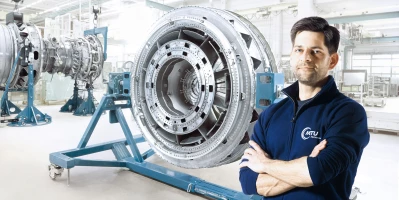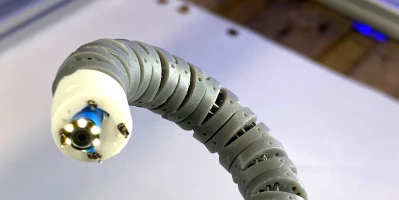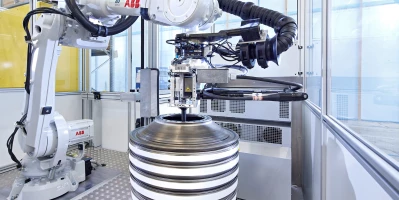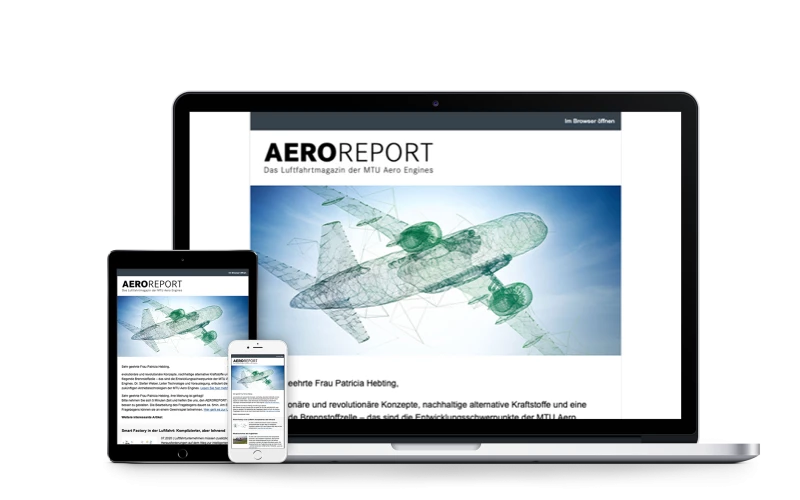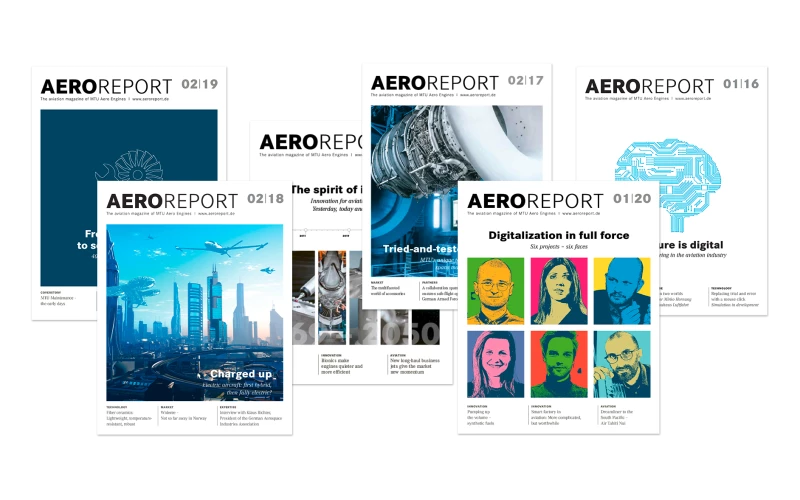innovation
V2500: Minor repair job—major effect
Sometimes a seemingly insignificant component can have a considerable impact. In the case of the high-pressure compressor for the V2500 engine, thin vibration damping rings were greatly reducing its service life. MTU Aero Engines has now come up with a simple, approved solution to tackle this issue.
05.2017 | author: Achim Figgen, Thorsten Rienth | 5 mins reading time

Installed in over half of the Airbus A320’s globally operating aircraft, the V2500 engine—or the “V”, as it’s called by the specialists at MTU Maintenance in Hannover—is a regular visitor to the shop. Its high-pressure compressor should ideally withstand 16,000 to 20,000 cycles, in other words that many takeoffs and landings. However, maintenance staff soon noted that they were replacing the front part of the compressor’s rotor drum, which is a very valuable component, after roughly 8,000 cycles.
The problem was traced to relatively inconspicuous components, namely sealing wires made of a cobalt-based alloy and just millimeters wide. They serve as vibration dampers for the compressor blades in stages six to eight to ensure the stator blade ring and rotor do not wear each other out and the blades do not fracture. While in use, the wire ends were eating into the titanium alloy of the retaining grooves directly in front of and behind the blade roots where the six damping rings sit. They would damage the groove to such an extent that the rotor could not operate after around 8,000 cycles.
Cross-section model comparing old and new Image on the left: In the foreground, the wires are overlapped, whereas in the background they are slipped inside one another. Image on the right: Detailed image of the interwoven wire ends, a technique that prevents them from working free and penetrating the grooves in the drum walls.
Lock and key principle in the millimeter range
The OEMs itself carried out multiple changes to the wire, with engineers first rounding off the initially blunt ends and later trying to overlap them. MTU then came up with a tongue-and-groove solution so blunt ends were neither left exposed nor overlapping. In order to prove their effectiveness, the repair engineering teams from MTU in Hannover and Munich as well as several other analytics, materials and test engineers scrutinized the entire air circulation system including all load factors and examined samples of different materials under a scanning electron microscope.
“Simply put, this relies on a lock and key principle at a scale of fractions of a millimeter,” explains propulsion engineer Christian Heinzelmaier. “The wire tapers at one end. Its counterpart at the other end is designed like a small tunnel for the tapered end to enter. With a length of six millimeters, the ends remain flexible so they can sustain thermal expansion and loads without breaking. However, the real advantage is that this interlocking prevents the wire ends from swinging freely and embedding themselves in the wall of the grooves. This in turn means there is no need to repair the groove walls by ablation until much later.” It’s a relatively easy solution—“when you know how.”
Second issue: Outer wall of the groove
Because the outer wall of the groove is very thin, especially in the case of the eighth stage, after ablating away severe damage there is hardly any material left. For this reason, the damaged portion is completely removed. But this in turn means that the blades are no longer fully seated in the corresponding slot of the rotor disk, which could cause them to wobble. To minimize this risk, the MTU engineers apply a thin layer of coating material to increase the thickness of the outer wall by a few tenths of a millimeter. This is done using a new, spark-free technique. “That way we can preserve the properties of the titanium material used to construct the rotor.”
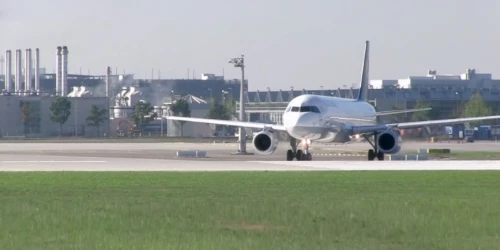

V2500 MRO at MTU Maintenance
The V2500 powers the Airbus A319, A320, A321, as well as the McDonnell Douglas MD-90. MTU Maintenance Hannover has been repairing and overhauling this engine since 1989, as has MTU Maintenance Zhuhai since 2003. To the video
Approval after 8,000 cycles and 150-hour endurance test
Both EASA and the FAA approved the process because they recognized that the repaired rotor behaves exactly like the original rotor and no further damage occurs. For the approval, the sealing wires had to undergo 8,000 cycles on the test bench followed by a 150-hour endurance test in a complete V2500 engine. This approval certificate makes MTU Maintenance the only independent maintenance organization in the world authorized to use a repair process developed in-house to carry out repairs on a limited-life component for which it does not itself hold the design responsibility. Initial experience from practical application revealed excellent results with hardly measurable wear and tear, confirming that the repair solution works. U.S.-based airline JetBlue was the first big customer to sign up. It uses the V2500 engine with its Airbus A320 and A321 aircraft.
Most importantly, repairs reduce costs and secure the fleet’s capacity. “Every time a rotor is replaced, the engine has to be completely removed from the wing,” explains Gert Wagner, Director Engine Programs at MTU Maintenance Hannover. “This process takes a considerable amount of time.” That is time in which the aircraft cannot transport passengers or earn money. However, a positive side effect of the repair is that valuable material on the rotor remains intact longer. The new sealing wires may not be directly transferable to other engines. “But we will of course make a note of the design of the tapered wire ends.”







